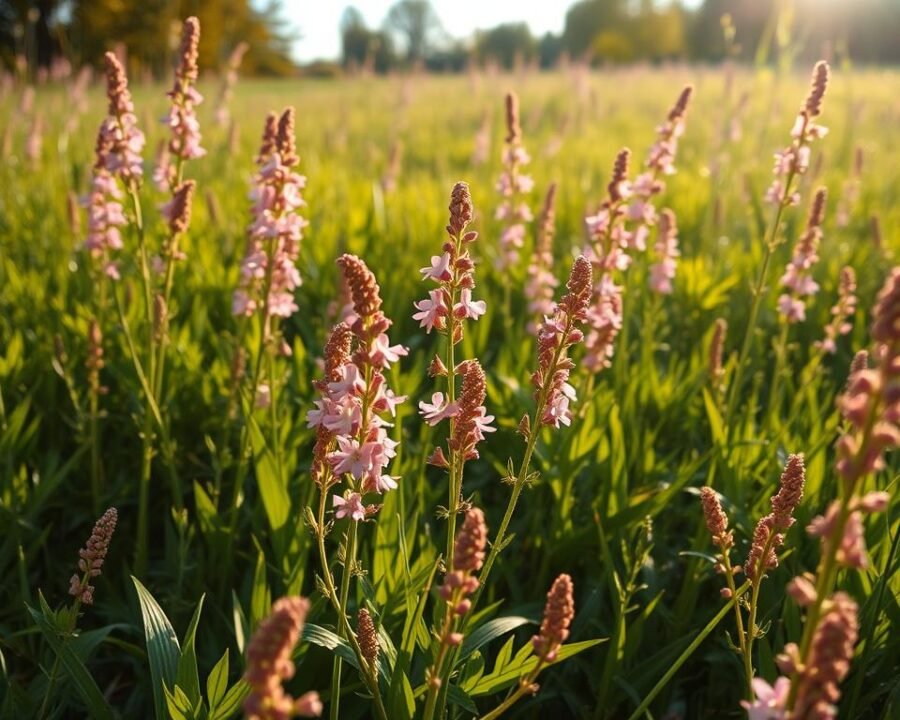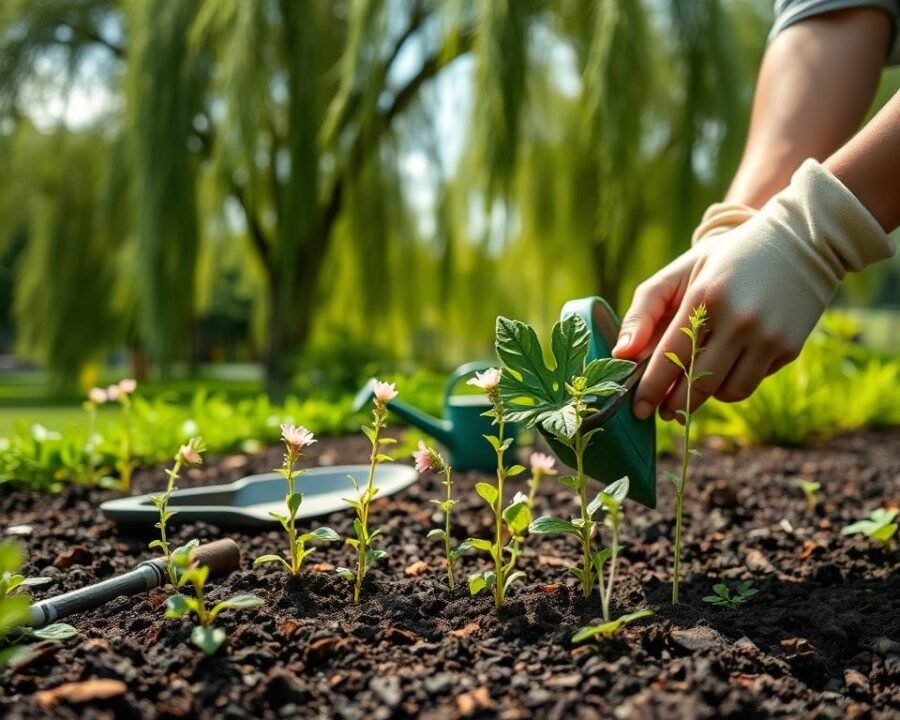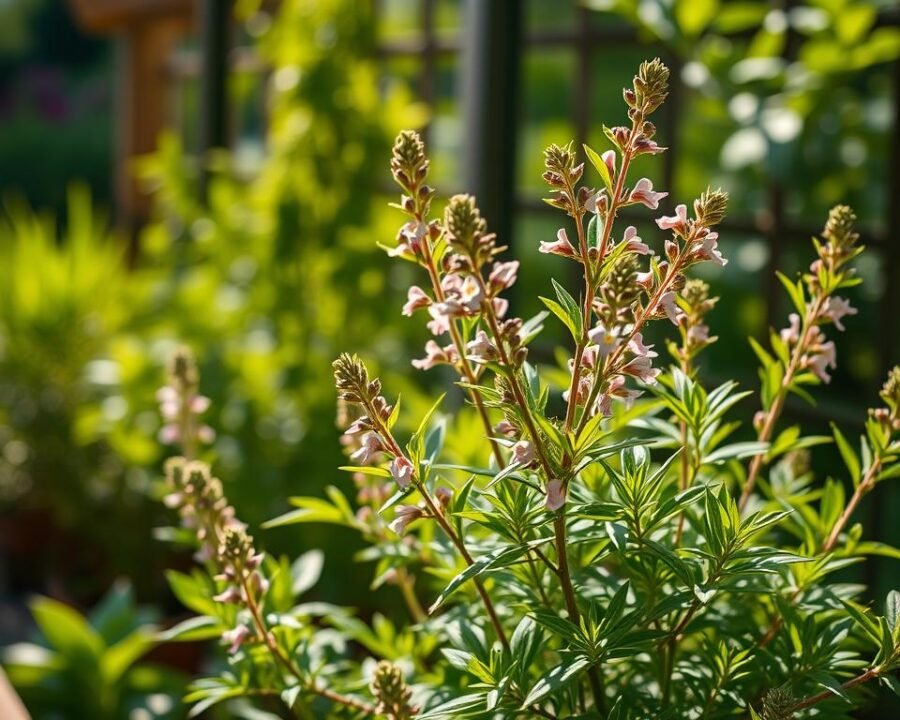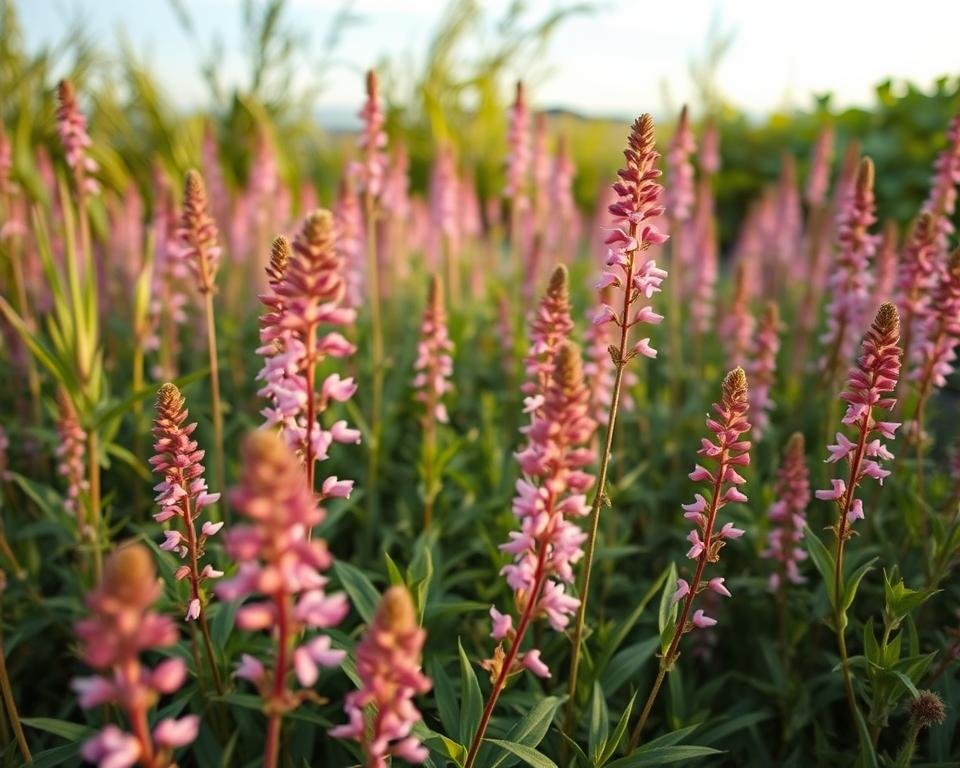We Know How: How to Grow Willow Herb Plant Everyone Is Using
There’s something magical about a garden filled with vibrant pink blooms swaying gently in the breeze. The willow herb, also known as fireweed, isn’t just a pretty face—it’s a powerhouse of health benefits and resilience. Whether you’re a seasoned gardener or just starting, this plant offers beauty, nutrition, and even a touch of history.
For centuries, cultures have cherished its leaves and stems for their medicinal properties. Traditional healers, like those in Hedgerow Medicine, praised its soothing qualities. Today, it thrives in backyards and wild spaces alike, adapting effortlessly to different soils and climates.
From its edible seeds to its role in ecological recovery, this plant proves that nature provides in the most unexpected ways. Let’s explore why it’s a must-have in your garden this year.
Key Takeaways
- Willow herb is a hardy perennial with striking pink flowers and multiple uses.
- Its leaves and stems are packed with nutrients and therapeutic compounds.
- Thrives in disturbed soils, making it ideal for eco-friendly landscaping.
- Historically valued in herbal medicine for its healing properties.
- Easy to cultivate, even for beginners, with minimal maintenance.
Why Grow Willow Herb? Health and Garden Benefits
Beyond its striking beauty, willow herb packs a punch of wellness and ecological perks. This hardy perennial isn’t just a pretty face—it’s a treasure trove of nutrients, a pollinator magnet, and a soil savior.
Nutritional and Medicinal Properties
Every part of this plant serves a purpose. Young leaves taste like asparagus, while mature stems yield a sweet, edible pith.
“The pith can be eaten raw or cooked—it’s a survival superfood,”
notes wilderness expertPaul Kirtley.
Rich in vitamins A and C, calcium, and potassium, the leaves make a restorative tea. Traditional remedies use it for digestive relief and migraines. Studies even explore its role in supporting prostate health.
| Edible Part | Uses | Key Nutrients |
|---|---|---|
| Young Shoots | Steamed like asparagus | Vitamin A, Manganese |
| Mature Stems | Raw pith or fermented | Fiber, Potassium |
| Dried Leaves | Tea, wound dressings | Vitamin C, Calcium |
Attracting Pollinators with Pink Flowers
Bees and butterflies flock to its vibrant flowers. The fluffy seeds, once pollinated, double as natural tinder—a survival hack for campers.
Soil Stabilization and Low-Maintenance Perks
Fibrous roots prevent erosion, making it ideal for slopes. Once established, it thrives with little water. As London’s county flower, it symbolizes resilience—perfect for busy gardeners.
Choosing the Perfect Spot for Your Willow Herb
Finding the right location makes all the difference for thriving plants. Willow herb adapts well, but optimal conditions ensure lush growth and vibrant blooms. Let’s explore the ideal setup.

Sunlight Needs: Full Sun to Partial Shade
This hardy perennial loves bright sun but tolerates shade. In full sunlight, blooms appear faster. Partial shade extends flowering, perfect for longer displays.
Soil pH and Drainage Tips
Aim for slightly acidic to neutral soil (pH 6.0–7.0). Test kits are affordable and easy to use. Enrich the ground with compost or aged manure for best results.
Avoid waterlogged areas—well-draining loam prevents root rot. Slopes or disturbed sites, like near train tracks, mimic its natural habitat.
Climate Considerations for US Regions
Thrives in USDA zones 2–8, handling cold winters and moderate humidity. Coastal or mountainous areas? No problem. Just ensure proper drainage.
How to Grow Willow Herb Plant Everyone Is Using
Getting started with this resilient perennial offers two great options—seeds or cuttings. Each method suits different timelines and gardening styles. Let’s break down the best choice for your needs.
Seeds vs. Cuttings: Speed and Success
Seeds take 14–30 days to germinate, ideal for patient gardeners. Cuttings, however, establish roots faster—often in half the time. For quick growth, snip 4–6 inch shoots from healthy stems.
Willow Water: Nature’s Rooting Boost
Boost success rates to 90% with a DIY rooting hormone. Simmer 1-inch willow twigs in water for 24 hours, then strain. Soak cuttings for 3+ hours before planting.
Freeze extra solution for future use. This natural trick speeds up the process without chemicals.
Spacing for Healthy Plants
Space young plants 12–18 inches apart. Crowding invites fungal issues, while proper airflow ensures vibrant growth. In a container, limit to one plant per 12-inch pot.
Planting Your Willow Herb Step-by-Step
Timing and technique make all the difference when establishing new plants. Follow these tips to ensure your garden thrives with vibrant blooms and healthy stems.
Best Time to Plant
Early spring, after the last frost, or fall before the ground freezes are ideal. Cooler temperatures reduce stress, allowing roots to settle. Avoid summer heat—it dries out young plants.
Digging the Right Depth
Shallow planting (1–2 inches) prevents suffocation. Loosen soil with compost for better growth. Space plants 12–18 inches apart to avoid crowding.
Mulching for Moisture Retention
Spread straw or bark mulch around stems. It locks in water and suppresses weeds. Pair with drip irrigation for consistent moisture in dry areas.

- Prep soil: Mix in compost for nutrients.
- Plant shallow: 1–2 inches deep to avoid rot.
- Mulch wisely: 2–3 inches keeps roots cool.
Caring for Established Plants
Proper care transforms established perennials into thriving garden stars. With minimal effort, these resilient beauties flourish, offering lush foliage and vibrant blooms year after year.

Watering Schedule: Deep Weekly Soaks
Mature plants need about 1 inch of water weekly. Droughts may require extra soaks, but overwatering risks root rot. Check soil moisture—dry topsoil signals it’s time to hydrate.
Fertilizing for Optimal Growth
A balanced 10-10-10 NPK fertilizer every 4–6 weeks fuels growth. Organic options like fish emulsion work wonders for eco-friendly gardens. Here’s a quick guide:
| Fertilizer Type | Application | Key Benefit |
|---|---|---|
| 10-10-10 NPK | Every 4–6 weeks | Balanced nutrients |
| Fish Emulsion | Monthly | Gentle, sustainable |
| Compost Tea | Biweekly | Soil enrichment |
Pruning Techniques for Healthier Plants
Trim dead stems and spent flowers to encourage bushier growth. Use clean shears to prevent disease. Early spring is ideal for shaping.
- Avoid over-pruning: Remove only 30% of growth at once.
- Timing matters: Post-bloom pruning extends next season’s display.
Harvesting Leaves, Flowers, and Stems
Reaping the rewards of your willow herb requires timing and technique. Each part offers unique flavors and health benefits, from spring shoots to summer blooms. Let’s explore the best ways to gather nature’s bounty.
Optimal Times for Harvesting
Young leaves taste best in early spring—tender and mildly sweet. Clip them before flowering for salads or steaming. By midsummer, vibrant pink flowers peak, ideal for syrups or garnishes.
For stems, wait until they’re pencil-thick. The inner pith becomes sweeter as they mature. Avoid roadside plants; pollution taints their edible qualities.
Crafting Medicinal Tea and Jams
Fermented tea, like Russian Ivan Chai, unlocks deep flavors. Follow this simple process:
- Wilt fresh leaves for 12 hours
- Roll tightly to bruise and release juices
- Ferment in a jar for 24–48 hours
- Dry at 95°F until crisp
For jams, simmer flowers with sugar and lemon. Strain for a floral syrup perfect over pancakes.
Drying for Long-Term Use
Preserve leaves by spreading them in a single layer. Use a dehydrator at 95°F for 2–3 days or air-dry in a shaded, breezy spot. Store in airtight jars away from sun.
| Plant Part | Best Harvest Time | Storage Method |
|---|---|---|
| Young Leaves | Early Spring | Dried or Frozen |
| Flowers | Mid-Summer | Syrup or Dried |
| Mature Stems | Late Summer | Fresh or Fermented |
Label jars with dates and use within a year for peak potency. Your pantry will thank you!
Troubleshooting Common Problems
Even resilient plants face challenges, but simple solutions keep them thriving. Early detection protects health and prevents minor problems from escalating. Our guide covers the top issues and the best way to handle them.
Stopping Root Rot and Powdery Mildew
Mushy, brown root systems signal overwatering. Improve drainage with perlite or sand amendments. For existing infections, trim damaged parts and apply cinnamon powder—a natural fungicide.
Powdery mildew appears as white dust on leaves.
“Morning watering prevents overnight moisture buildup,”
advises the USDA PlantHealthClinic. Neem oil sprays treat active cases.
Controlling Aphids and Spider Mites
Tiny pests cluster on new growth. Blast them off with a hose or try this DIY spray:
- Blend 2 garlic bulbs + 1 cup mint leaves
- Steep in 1 quart hot water overnight
- Strain and spray affected areas
For severe infestations, insecticidal soap works without harming bees. Reapply every 5-7 days.
Deterring Deer and Rabbits
Motion-activated sprinklers startle browsing animals. Alternatively, plant lavender nearby—its scent repels rabbits naturally. Physical barriers like chicken wire protect young plants best.
| Problem | Early Signs | Quick Fix |
|---|---|---|
| Root Rot | Yellowing lower leaves | Reduce watering frequency |
| Aphids | Sticky residue on stems | Ladybug release |
| Deer Damage | Ragged leaf edges | Tall fencing |
With these tips, your garden stays vibrant all season. Catching problems early makes solutions easier.
Companion Plants for a Thriving Garden
Strategic plant partnerships unlock hidden benefits for your garden ecosystem. The right neighbors enhance growth, deter pests, and even improve soil. Let’s explore ideal pairings and what to avoid.
Bee Balm and Yarrow: Dynamic Duos
Bee balm’s vibrant flowers attract pollinators, boosting yields. Yarrow’s deep roots aerate soil, creating space for stems to spread. Together, they create a balanced microhabitat.
“Yarrow’s roots break up compacted earth, letting nutrients flow freely,”
Marigolds make excellent border plants. Their scent repels aphids, protecting nearby health benefits-rich greens.
Plants to Keep at a Distance
Avoid tomatoes—they hog nutrients, stunting neighboring growth. Walnut trees release juglone, toxic to many plants. Keep these at least 50 feet apart.
- Tomatoes: Heavy feeders compete for resources.
- Walnuts: Juglone sensitivity harms roots.
- Tall shrubs: Block sunlight, limiting blooms.
For enthusiasts, this post simplifies the way to a harmonious garden. Pair wisely, and watch your space flourish!
Conclusion: Enjoy Your Vibrant Willow Herb
Nature’s resilience shines through this vibrant perennial, blending beauty with purpose. Whether adorning your garden or offering health benefits, it’s a standout choice for any space.
Try the willow water process for faster root growth. Share your fireweed jelly recipes below—we’d love to see your creations!
Tag @PreparednessMama on social media. Your experience might inspire others to join the green revolution.







